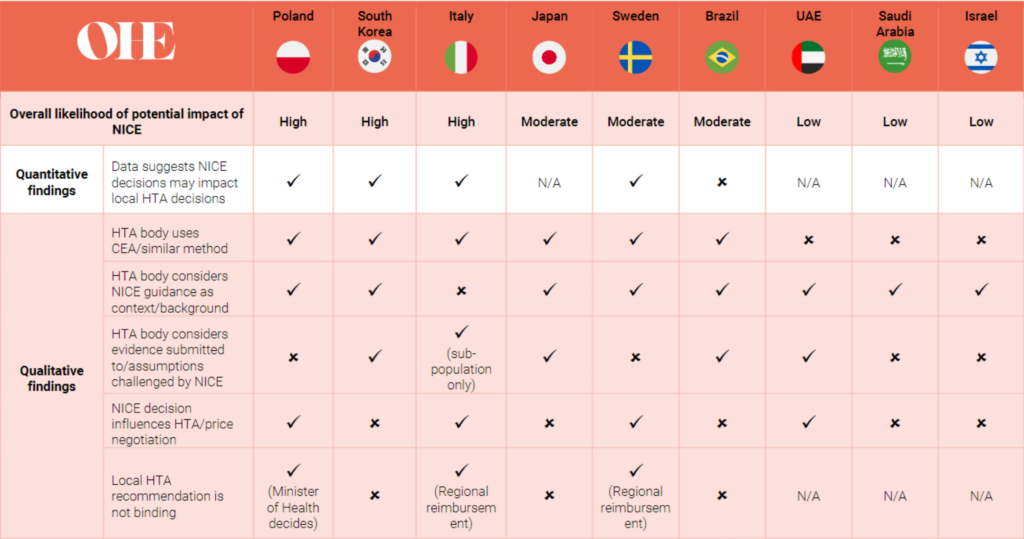Sign up to our newsletter Subscribe
Challenges and Solutions for Budget Impact Analysis of Gene Therapies

HTA is a crucial component of health care decision-making in many countries with wide-reaching consequences for population health. Within the global HTA landscape, the National Institute for Health and Care Excellence (NICE) plays a prominent role. However, there is limited evidence on the extent to which this is the case and, if it is, how NICE’s decision outcomes on individual interventions affect HTA in other countries.

N/A: No data available
Figure 1: Summary table of the potential international impact of NICE decisions through quantitative and qualitative research
We collected a dataset of HTA decision outcomes made by NICE between January 2018 to December 2019 and the equivalent decisions made by eight international HTA bodies to estimate the impact of NICE. To complement this work, we conducted interviews with industry, relevant decision makers and academics, some of which were included in the quantitative analysis and some additional countries where data collection was not possible.
Figure 2: Decision outcomes of completed HTA
We conclude that NICE guidance is likely to have some impact in other countries, but this varied from being included as context or background for decision-makers, providing information on assumptions in the economic model to be scrutinised or that can impact the price negotiations. We also surmise that indirect mechanisms for influence are likely to exist, for example, similar methodologies (i.e., cost-effectiveness analysis), transparency and availability of decisions online, and the reputation of NICE and UK universities.
Although it is too early to predict outcome of increased collaboration between HTA agencies, they might strengthen NICE’s role on the international stage. On the other hand, given that NICE is not included in European activities to streamline HTA (such as Joint Clinical Assessment), this and other post-Brexit activities could weaken the influence of NICE, particularly in Europe.
NICE enough? Do NICE’s Decision Outcomes Impact International HTA Decision-making?
